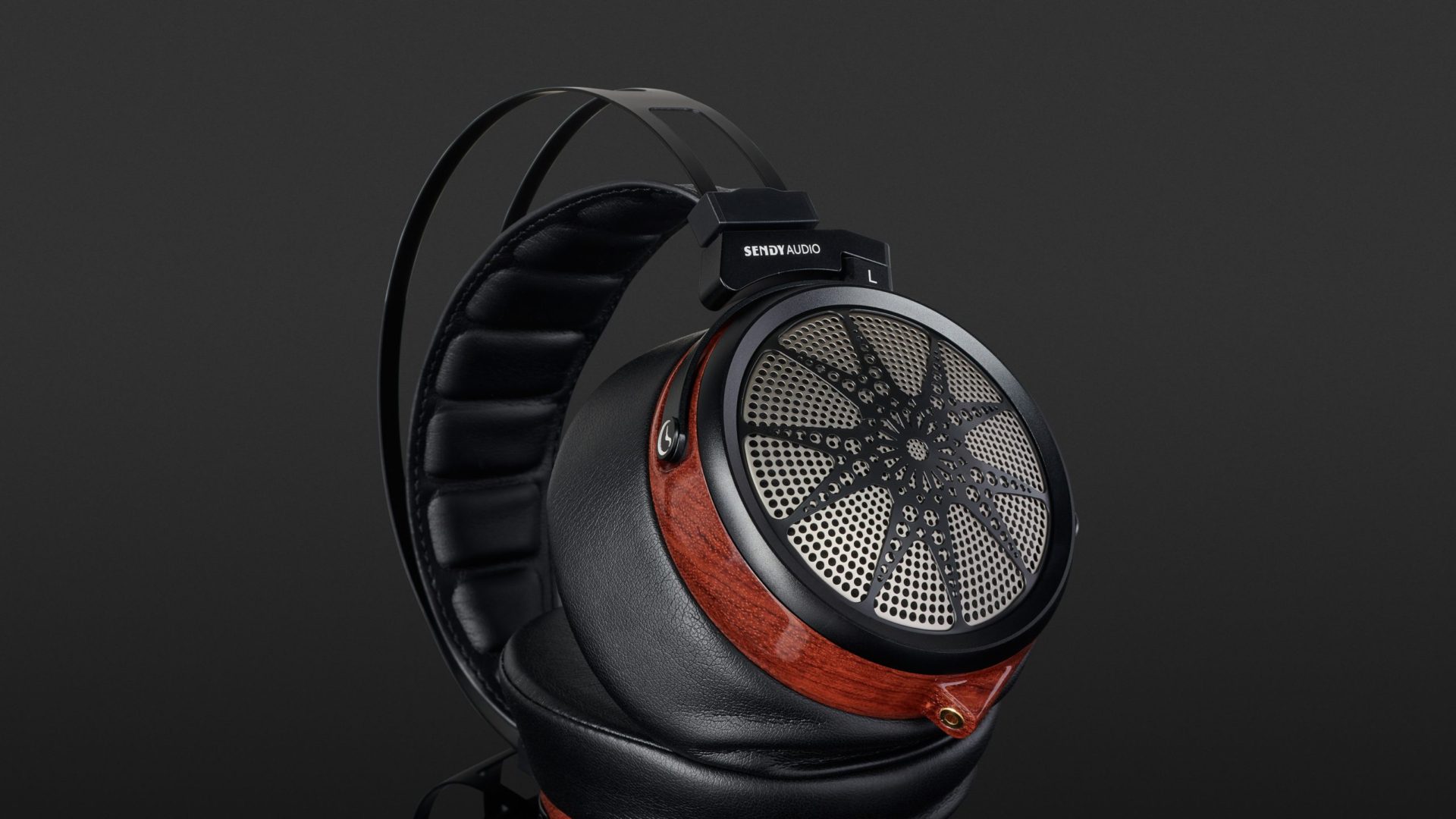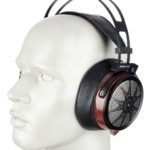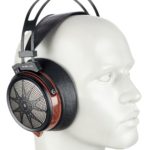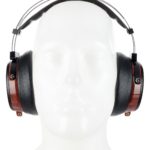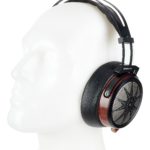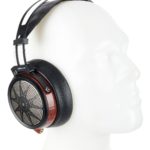Sendy Audio has named the Apollo model after the god of music and song but only partially lives up to this high standard. These headphones impressed us with their high-quality package, a good choice of materials and great workmanship. The easy handling and high wearing comfort were also pleasing. In terms of sound, these headphones offer a rather warm sound with discreet highs, although they are anything but restrained in the mids. Nevertheless, the price-performance ratio of this model was not really successful in comparison with the more expensive model from the same manufacturer. This was because the Sendy Audio Apollo is similar in sound to the Aiva but has much less to offer in terms of dynamics and delivers a very mid-range-heavy frequency image. In the end, these headphones are primarily for music lovers who want to enjoy classical music and jazz with a warm sound at a (still) relatively high-quality sound level at a not too high volume.
Sendy Audio’s Apollo are a pair of headphones with magnetostatic drivers at an entry-level price. The high-quality package, good choice of materials and great workmanship are impressive. They deliver a rather warm sound with subtle treble.

The Sendy Audio Apollo is the kid brother of the Sendy Audio Aiva (to the review), which we have also reviewed. Like the Aiva, the Apollo are open, circumaural headphones with magnetostatic drivers. However, the model that this review focuses on is made by the brand in Dongguan, China, and is only 3/4 of the price of the Aiva.
Sendy Audio Apollo Package
The Sendy Audio Apollo arrives in a plain cardboard slipcase without frills but with a carefully designed label. When you open the box, you immediately see the headphones’ custom-fit leather case, which has a wide zip. A leather loop makes it easy to handle. There is also a wide leather wrist strap on the side. The case has feet so that it can be placed upright to save space. In addition to the headphones, it also contains a small pouch made of hemp fabric in which the Apollo cable and adapter are stored.
The cable is braided and interchangeable, made of high-purity 6N OCC copper with cast strands, and carries audio signals balanced. Accordingly, it has a 4.4 mm Pentaconn plug that can be connected to high-end headphone amplifiers such as the Sennheiser HDV 820 (to the review). A 19 cm long plug adapter is included, so you can also use a 3.5 mm mini-jack plug. All cable and adapter contacts are gold-plated for corrosion protection. Even though this package is not extensive, it is of high quality.
Materials and feel
The best-looking thing about these headphones is the earcups which are made of high-gloss lacquered bubinga wood. To keep these cups acoustically open at the back, a thin perforated steel plate has been fitted, and this is held in place by a sun-shaped logo. The removable ear pads are made of protein leather and filled with memory foam. Their shape is surprisingly reminiscent of a section of a cone that is hollow on the inside. This is intended to enhance wearing comfort. However, the ear pads with velvet interior, as featured on the Aiva, are not included here. The headband padding is made of soft leather with a partially padded underside, which is supposed to provide ventilation. This looks high-quality throughout, has an “expensive” feel and is well finished down to the last detail.
Wearing comfort
The Sendy Audio Apollo’s headband adapts well to the shape of the head thanks to stepless variable size adjustment; there is no direct contact between the head and the steel headband. The earpads with their protein leather and memory foam, sit gently against the head. Their large contact surface distributes the already low contact pressure widely. The earpads are attached to a support frame that can be removed with a slight twist. It is possible to put these headphones on without too much thought, as there are large letters on the ear cups indicating which are the left and right sides. The overall handling of these headphones is uncomplicated, and their wearing comfort is high.
Technology
The Apollo uses a 68 mm diameter diaphragm. It is magnetostatically driven. This is said to result in good low bass transmission, natural vocal sound and detailed highs. In general, magnetostatics are said to have a transparent sound stage. Sendy Audio haven’t given the Apollo just one coil per diaphragm, as is usual with other magnetostatics, but two on each side of the diaphragm. These should be able to cover the surface better than would be the case with only one coil. According to the manufacturer, this results in a more even drive for the entire diaphragm surface and thus considerably more control. The magnets, which are mounted on both sides of the diaphragm, are located with the diaphragm in a housing that has been CNC-milled from special aluminium. The high precision in its manufacturing is supposed to guarantee a more realistic reproduction of the music signal. According to Sendy Audio, they have been working on this construction for more than three years and call it “Quad Former Technology”.
As for technical values, the Apollo is just as broadly positioned in the frequency range as the more expensive Aiva model. It also reproduces audio from 20 Hz to 40 kHz. And in terms of maximum sound pressure level, it sounds even louder than the more expensive model, we measured 95.3 dBSPL. Its average impedance of 16.3 ohms is significantly lower and therefore allows it to achieve a high volume even at lower voltage headphone outputs. Pleasingly, these values correspond more precisely to the manufacturer’s specifications than those of some competing models. However, they let themselves down a bit, as the cable supplied is only 1.70 m long instead of 2 m.
Sound of the Sendy Audio Apollo
The Sendy Audio Apollo shows behaviour typical of many open headphones in the bass, where the bass range sounds uncompressed and open. I missed having a really “round” bass sound here. However, these headphones do have some reserves in the low bass range, which can be used to the fullest, especially when the bass is boosted from the amplifier side. At low to moderate volumes, the Apollo’s sound is warm in the midrange, contains restrained highs, but can still offer sufficient openness up into the super-high range. Due to the overall warm sound, its subjective signal resolution and low-frequency response also seem a little limited compared to the competition. The frequency response of these headphones seemed to me to be downright “distorted”, leading to a muffled, even a warped sound with pop music. Although the reproduction was rich in detail, the overall sound was so strongly oriented towards the upper mids and the vocal presence range that, for example, guitar-heavy music quickly seemed harsh. In addition, at anything more than moderate volumes, distortions in the bass suddenly appeared above a certain threshold, which spoilt my listening pleasure. This was especially noticeable with very dynamic audio material. If you listen to powerful classical music such as Stravinsky or Tchaikovsky with the Apollo, you would be well-advised to test a loud passage and adjust the volume of the headphones accordingly. Otherwise, especially in the most intense musical passages, unpleasant experiences with distorted playback can occur.
Technical specifications
- Ear couplingOver-ear
- Typeopen
- Transducer principlemagnetostatic
- Frequency response (headphones)20 - 40.000 Hz
- Impedance16,3 ohms
- Sound pressure level (SPL)95,3 dB
- Pressure averaged from big and small head694 g
- Weight with cable415 g
- Weight without cable383 g
- Cable length170 cm









